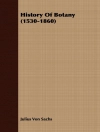This book uses mathematics of uncertainty to examine how well countries are achieving the 17 Sustainable Development Goals (SDGs) set by the members of the United Nations, with a focus on climate change, human trafficking and modern slavery. Although this approach has never been used before, mathematics of uncertainty is well suited to exploring these topics due to the lack of accurate data available. The authors place several scientific studies in a mathematical setting to pave the way for future research on issues of sustainability, climate change, human trafficking and modern slavery to using a wide range of mathematical techniques. Moreover, the book ranks countries in terms of their achievement of not only the SDGs, but in particular those SDGs pertinent to climate change, human trafficking, and modern slavery, and highlights the deficiencies in the foster care system that lead to human trafficking. As such it is an excellent reference resource for advanced undergraduate and graduate students in mathematics and the social sciences, as well as for researchers and teachers.
Daftar Isi
Preliminaries.- Sustainability: Analysis Using Mathematics of Uncertainty.- Sustainable Development Goals and Human Trafficking.- Sustainable Development Goals: Analysis by the Stakeholder Method.- Human Trafficking Rankings.- Similarity Measures of Rankings.- Climate Change and Modern Slavery.- Human Trafficking.
Tentang Penulis
Dr. John N. Mordeson is Professor Emeritus of Mathematics at Creighton University. He received his B.S., M.S., and Ph.D. from Iowa State University. He is a member of Phi Kappa Phi. He has published 19 books and over 200 journal articles, and is on the editorial board of numerous journals. He has served as an external examiner for Ph.D. candidates from India, South Africa, Bulgaria and Pakistan, and has also served as a referee for numerous journals and grant agencies. He is particularly interested in applying mathematics of uncertainty to combat the problem of human trafficking.
Dr. Sunil Mathew is a faculty member at the Department of Mathematics, NIT Calicut, India. He has holds a master’s degree from St. Josephs College, Calicut, and a Ph.D. in Fuzzy Graph Theory from the National Institute of Technology Calicut. He has 20 years of teaching and research experience, and his current research focuses on fuzzy graph theory, bio-computational modeling, graph theory, fractal geometry, and chaos. He has published more than 100 research papers and written five books, and is an editor and reviewer for several international journals. He is a member of numerous academic bodies and associations.












